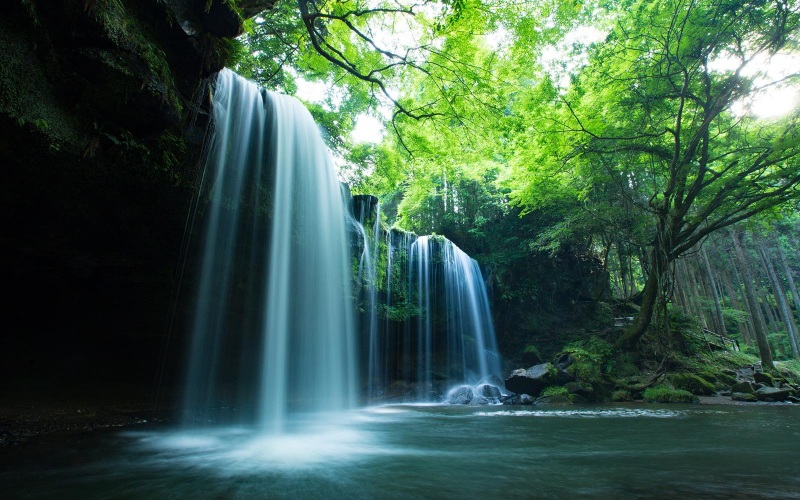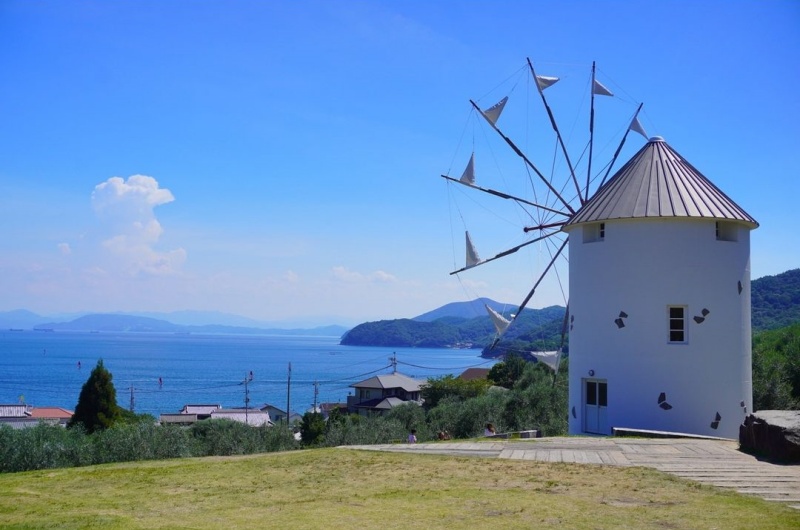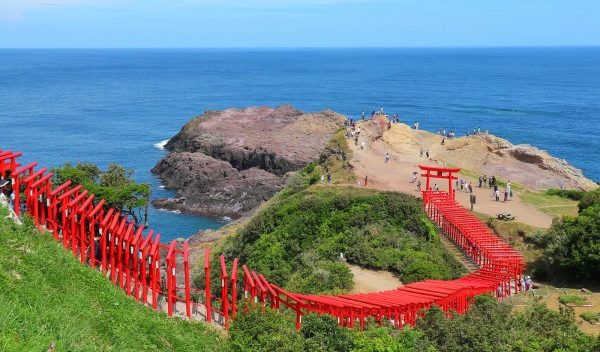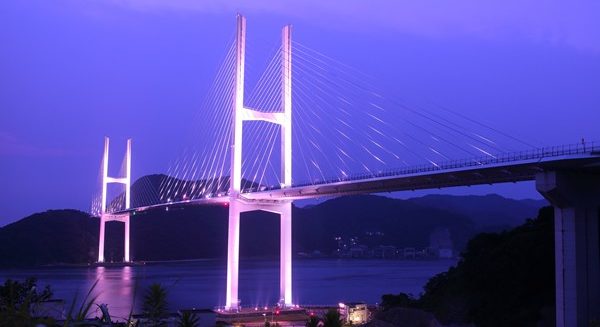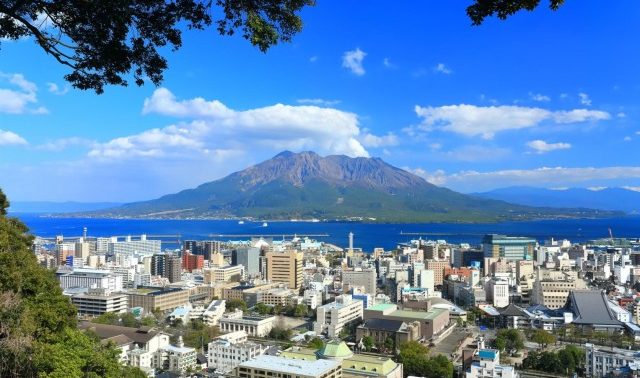Lake Kawaguchi is a conveniently located lakeside resort area, merely a two-hour drive from the city center.
Among the Fuji Five Lakes, it stands out as the most frequented by tourists, boasting numerous scenic attractions in its vicinity.
The allure of Lake Kawaguchi lies in the captivating views of Mount Fuji reflected on its surface. Visitors can revel in the spectacular changing scenery throughout the seasons, from cherry blossoms to autumn foliage.
Now, let's delve into a special spot where you can fully embrace the pleasures of strolling around Lake Kawaguchi. Here, you'll find an abundance of information on hot springs, leisure activities, and culinary delights.
A day trip from the Tokyo metropolitan area is all it takes to leisurely explore the charms of Lake Kawaguchi.
To curb the spread of the novel coronavirus, some shops and facilities are implementing temporary closures or alterations to their operating hours. Prior to venturing out, kindly verify the latest information through the official websites or social media channels of the respective establishments.
What kind of lake is Lake Kawaguchi?
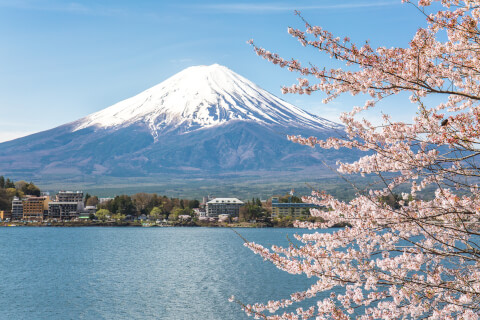
Lake Kawaguchi is one of the "Fuji Five Lakes" and stands as one of the representative tourist areas in Yamanashi Prefecture.
However, the ability to correctly name each of the Fuji Five Lakes is a rare feat.
While Lake Yamanaka and Lake Kawaguchi are well-known, the understanding of the other three lakes is somewhat limited. After reading this article, though, you should have a comprehensive knowledge of all of them.
This time, we will focus on the highlights and sightseeing spots of Lake Kawaguchi, a representative of the Fuji Five Lakes, as well as the neighboring lakes—Lake Sai, Lake Motosu, and Lake Shoji—all belonging to the town of Fujikawaguchiko.
What are the Fuji Five Lakes?
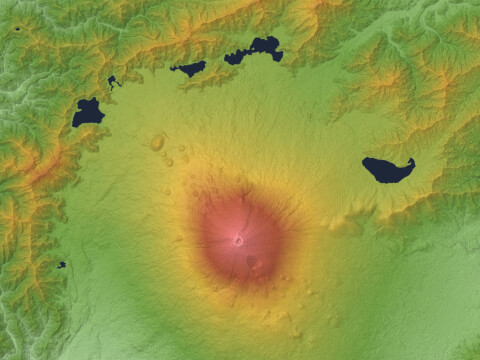
The term "Fuji Five Lakes" collectively refers to Lake Yamanaka, Lake Kawaguchi, Lake Sai, Lake Shoji, and Lake Motosu, all located in the southeastern part of Yamanashi Prefecture.
Renowned for offering spectacular views of Mount Fuji up close, the Fuji Five Lakes are a popular resort area near Tokyo.
Each lake possesses unique characteristics, creating distinctive surroundings that allow you to indulge in different aspects of a resort lifestyle at each one.
Among them, Lake Yamanaka is somewhat distant from the other four lakes and is often associated with nearby attractions such as the "Oshino Hakkai" in the same region.

Within the Fuji Five Lakes, Lake Yamanaka belongs to the village of Yamanakako, while Lake Kawaguchi, Lake Sai, and Lake Shoji are part of the "Fujikawaguchiko" town.
Lake Motosu is a bit different, with its shores divided between Fujikawaguchiko and Minobu Town (the boundary on the lake's surface is undetermined).
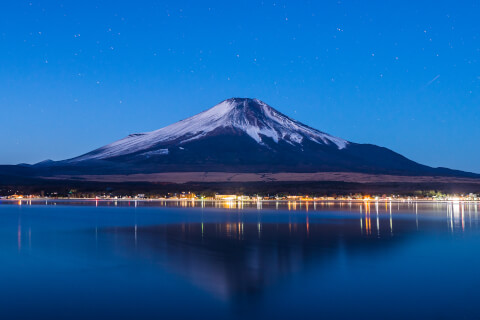
All of the Fuji Five Lakes were formed by the eruptions of Mount Fuji, which serves as the "parent mountain" for these lakes.
They are collectively designated as part of the "Fuji-Hakone-Izu National Park" and were recognized by UNESCO as a World Heritage site in 2013 as part of the "Fujisan, Sacred Place and Source of Artistic Inspiration."

Lake Yamanaka has the largest area among the Fuji Five Lakes, covering 6.8 square kilometers, but Lake Kawaguchi boasts the longest circumference, approximately 21 kilometers.
Furthermore, Lake Motosu holds the record for the greatest depth, reaching 121.6 meters, which is more than eight times deeper than Lake Yamanaka (13 meters) and Lake Kawaguchi (14.6 meters).
In terms of elevation, Lake Yamanaka stands at the highest point, with an elevation of 980.5 meters, followed by Lake Sai, Lake Motosu, and Lake Shoji (900 meters). Lake Kawaguchi has the lowest elevation at 830.5 meters.
Due to its altitude of over 800 meters, the climate at these lakes is comfortably cool during the summer, but as autumn sets in, the weather becomes chilly, requiring adequate preparation for the cold.
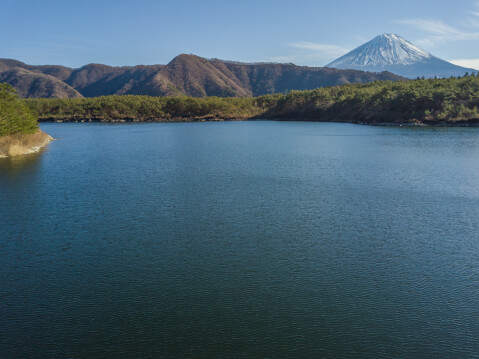
Each lake possesses its own distinctive charm, so tailor your experience of the Fuji Five Lakes based on your accommodation choice.
You can leisurely stroll along the lakeshore, embark on a boat excursion to frolic in the pristine waters, or try your hand at fishing.
Moreover, revel in the ever-changing landscapes that each season unveils.
Following Lake Kawaguchi is Lake Yamanaka.
While Lake Kawaguchi boasts numerous hotels and larger accommodations in its vicinity, Lake Yamanaka resembles more of a tranquil retreat.
Accommodations around Lake Sai, Lake Motosu, and Lake Shoji are sparse, mostly comprising camping sites.
The Gateway to Exploring the Fuji Five Lakes: Lake Kawaguchi

Lake Kawaguchi boasts the longest coastline among the Fuji Five Lakes and is the second-largest in terms of area.
The 21-kilometer shoreline is too extensive to explore entirely on foot.
Travelers relying on public transportation typically stay at their chosen destinations.
For those on a self-driving journey, navigating along the lakeside proves to be delightful.
Scattered along the lake's edge are numerous scenic spots, each offering a different perspective of the lake scenery as seen from the train window.
If you enjoy running, boldly circumnavigate the lakeshore – it conveniently aligns with the distance of a half marathon.

If you are using public transportation, Lake Kawaguchi serves as the base for exploring the other three lakes, excluding Lake Yamanaka.
Among the Fuji Five Lakes, it attracts the most visitors, offering a plethora of hotels, inns, souvenir shops, and numerous tourist attractions, making it the most frequented lake by tourists.
Importantly, natural hot springs continuously well up, allowing you to indulge in the soothing waters.
Furthermore, captivating events occur throughout the year, such as the cherry blossom festival in spring and the autumnal foliage corridor, attracting a steady stream of visitors during these seasons – a truly worthwhile experience.
This can be described as a lakeside resort that encapsulates the charm of the Fuji Five Lakes.
Fuji Kawaguchiko Town, a picturesque lakeside town
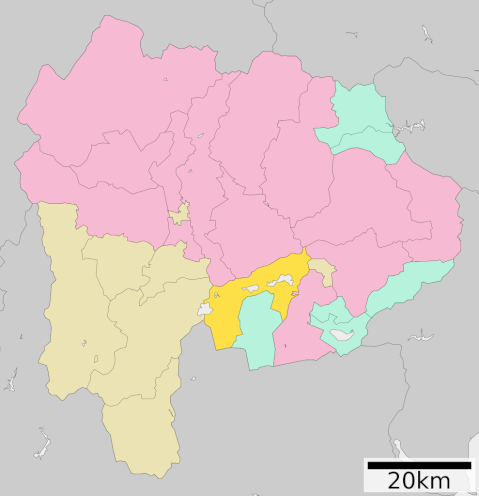
Kawaguchiko is named after the town name "Fuji Kawaguchiko Town (Minamitsuru District)."
Fuji Kawaguchiko Town is situated in the mountainous region above 800 meters above sea level, making it a town with an unparalleled advantage of being a scenic spot near Mount Fuji.
In the "Fuji Mountain Scenery 100 Selections" announced by the Ministry of the Environment, it has the highest number of selections, with 22 places.
Furthermore, Fuji Kawaguchiko Town has the longest name in characters in Japan.
In addition to Lake Kawaguchi, there are also West Lake, Shoji Lake, some of Lake Motosu, and four lakes of the Fuji Five Lakes.
The Shoji Lake/Motosu Lake area used to be a nationally famous village called Kamikuishiki Village.
In 2006, it merged with Fuji Kawaguchiko Town and has continued since then.
How to get to Lake Kawaguchi?
The transportation methods to Lake Kawaguchi are "car," "highway bus," or "train."
If you are joining a bus tour, you can take a bus directly from the meeting point, but there are schedules and time constraints.
By car

To drive to Lake Kawaguchi from the Tokyo metropolitan area, you need to take either the Tomei Expressway or the Chuo Expressway.
If you take the Tomei Expressway, exit at Gotemba IC, take National Route 138 to the Fuji Five Lakes Toll Road, and you will reach Fujiyoshida IC.
If you use the Chuo Expressway, head from Otsuki JCT to Kawaguchiko. "Kawaguchiko IC" is the closest.
From the Kinki/Central Japan region, you need to connect to one of the above expressways.
If you depart from the city center, it takes an average of about two hours to reach Lake Kawaguchi.
If you have ample time, it is recommended to sightsee at your own pace and easily visit the surrounding sightseeing spots of Lake Kawaguchi.
Express bus
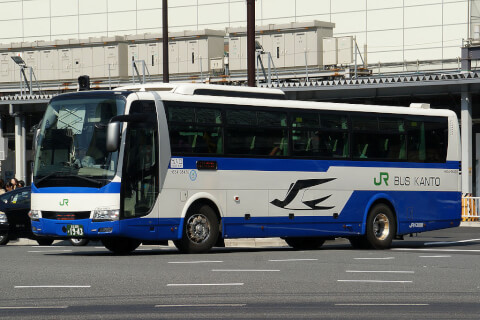
If you want to drink beer, sleep, or don't have a car or a driver's license, we recommend taking the express bus to Lake Kawaguchi.
In addition to Tokyo Station, Shinjuku Station, and Haneda Airport, there are flights from various locations in the Tokyo metropolitan area, including Machida, Yokohama, Omiya, and Fujisawa.
There are also express buses departing from Osaka, Kyoto, Nagoya, Gifu, and Shizuoka, making it convenient to travel from these directions.
If you have to pass through every station on the way, or if the starting point is far from your home, this plan may not be the best.
The required time and fare vary depending on the departure point, but when departing from Tokyo Station, the required time is about 2 hours, and the one-way fare is 1,800 yen.
Taking the train
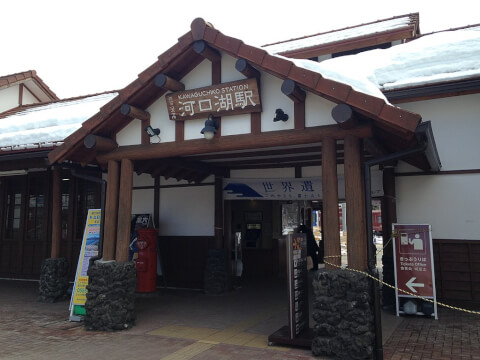
Lake Kawaguchi has the nearest station, Fuji-Q Highland Kawaguchiko Station, and it takes about 10 minutes to walk to the lakeside from the station.
While this seems convenient, it is not recommended unless you live nearby or along the railway line.
The Fuji-Q Highland Kawaguchiko Line, where Kawaguchiko Station is located, requires a transfer at JR Chuo Line Otsuki Station to the Fuji-Q Highland Otsuki Line.
From Fuji-Q Highland Otsuki Line's Mount Fuji Station (Fujiyoshida City), you need to transfer again to the Fuji-Q Highland Kawaguchiko Line.
If you take the Chuo Line, it takes about 2 hours from Shinjuku Station via Otsuki, which is comparable to a private car or a highway bus.
However, if your home is not along the Chuo Line, the travel time to get there will increase.
If you enjoy trains, you might find the hassle of transferring trains multiple times painful.
Transfers also involve waiting times, and transportation costs can be relatively expensive.
For reference, the adult one-way fare from "Shinjuku Kawaguchiko" is 3,387 yen (including IC priority and special ticket prices).
From Kawaguchi-ko to West Lake, Shoji Lake, Motosu Lake
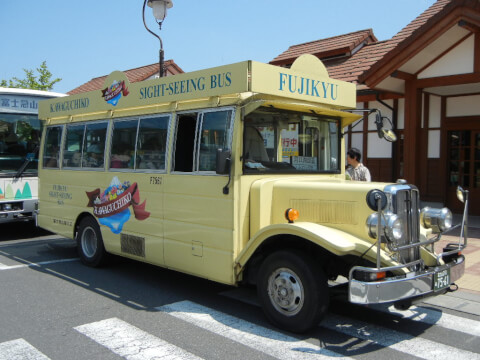
If you are touring Lake Kawaguchi by car or rental car, you can easily visit sightseeing spots and other lakes.
However, if you take a train or a highway bus, the sightseeing bus departing from Kawaguchiko Station is more convenient.
Lake Kawaguchi (Kawaguchiko Station) serves as a transportation hub for heading to West Lake, Shoji Lake, and Motosu Lake.
Fuji Kyuko Yamanashi Bus operates sightseeing buses as follows:
- Kawaguchiko Sightseeing Bus (Red Line)
- West Lake Sightseeing Bus (Green Line)
- Narusawa/Shoji Lake/Motosu Lake Circular Bus (Blue Line)
By taking this circular bus, passing through various attractions, you can reach West Lake in about 30 minutes, Shoji Lake in about 40 minutes, and Motosu Lake in about 50 minutes.
The Kawaguchiko Sightseeing Bus efficiently connects major sightseeing spots in the Kawaguchiko area, such as cable cars, the Vanilla Museum, and art museums.
Best seasons for Lake Kawaguchi tourism
Lake Kawaguchi and its surroundings are suitable for visiting in all four seasons.
In mid to late April, the "Fuji Kawaguchiko Cherry Blossom Festival" is mainly held in the northern shore area, with cherry blossoms in full bloom embellishing Lake Kawaguchi beautifully alongside Mount Fuji.
Summer, of course, is pleasant with a cool breeze from the lake, making it an ideal summer retreat.
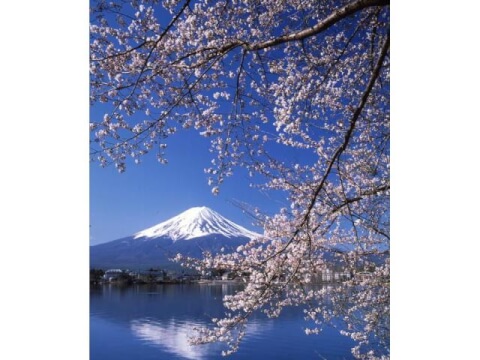
From mid-June to mid-July, the "Lavender Festival" is held at "Oishi Park" on the northern shore and "Yagisaki Park" on the southern shore.
When lavender is in full bloom, it paints the lakeside purple.

In autumn, the "Fuji Kawaguchiko Autumn Leaves Festival" starts in mid-November, featuring the masterpieces of illuminated "Autumn Foliage Corridor" and "Autumn Foliage Tunnel."
Winter is dignified with a touch of elegance, and if conditions are right, you might even encounter "Diamond Fuji."
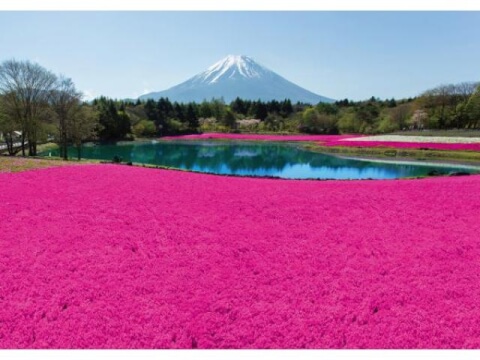
Do not miss the Fuji Shiba Sakura Festival held around Lake Motosu from mid-April to late May each year.
Approximately 800,000 moss phlox plants, one of the largest in Tokyo, turn the entire area into a lovely pink hue.
【Recommended sightseeing places around Kawaguchi Lake】
Lake Kawaguchi is home to numerous tourist facilities and restaurants, offering many attractions showcasing the most beautiful views of Mount Fuji, as well as facilities for both children and couples to enjoy.
We will also introduce recommended culinary and hot spring information.
1. Chanoyasaki
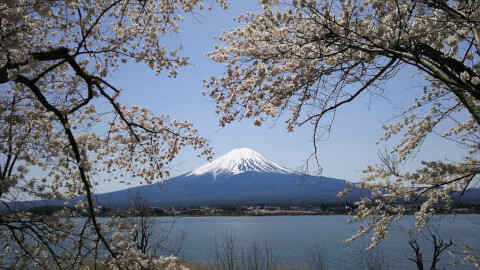
The view of Mount Fuji from the shores of Lake Kawaguchi is beautiful and impressive from any angle.
One of the best vantage points is from "Chanoyasaki," a cape protruding from the eastern shore of Lake Kawaguchi, currently located at the foot of the Kawaguchi Lake Bridge.
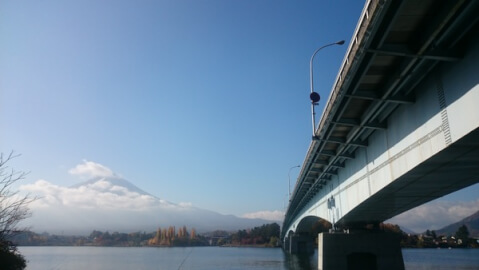
Back in the Taisho era, before the existence of the Kawaguchi Lake Bridge, photographer Ko Yo Okada introduced the beautiful view of Mount Fuji seen from here. Today, it is renowned as a place where you can see the "upside-down Mount Fuji" on clear days.
This area is also known as a cherry blossom viewing spot, and if conditions are right, you might capture the best photo with Mount Fuji, cherry blossoms, and the inverted Mount Fuji.
The name Chanoyasaki comes from a mythological story where Konohananosakuyahime, the wife of Nigigi no Mikoto, was born. Chanoyasaki's cape is enshrined with "Chanoyasaki Shrine," and the scenery here is also worth recommending.
Chanoyasaki Information
Address: Asakawa, Fujikawaguchiko, Minamitsuru-gun, Yamanashi
Map: Google Maps
Access: 15 minutes by car from the Chuo Expressway Kawaguchiko IC 11 minutes by Kawaguchiko Sightseeing Retro Bus, get off at Kozantei Chanoya
2. Kawaguchi Lake Tenjozan Park (Kachikachiyama Ropeway)
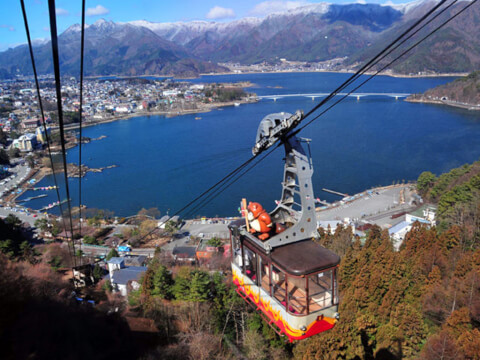
Do you know the Japanese folk story "Kachi Kachiyama"?
It's a story you might have heard in childhood about a rabbit punishing a raccoon for playing tricks on an old woman.
It is said that the stage for this Kachi Kachiyama story is actually around Lake Kawaguchi.
Kachi Kachiyama is the "Tenjozan" mountain, standing at 1075 meters by Lake Kawaguchi, where the last scene is said to depict the raccoon drowning in Lake Kawaguchi.
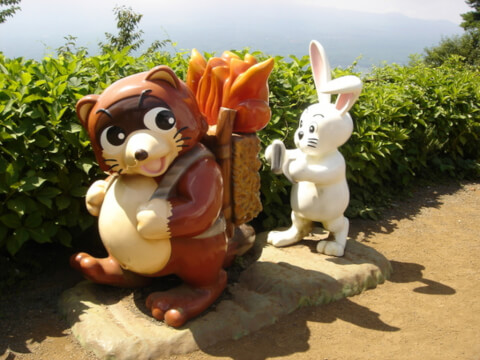
At the summit of Tenjozan is a park featuring objects of rabbits and raccoons, reenacting the Kachikachiyama story.
There is also a rabbit shrine dedicated to rabbits and a rest area called "Tanuki Neko Chaya."
You can enjoy a 360-degree panoramic view of Lake Kawaguchi and Mount Fuji.
It's said that by admiring the breathtaking view and ringing the Bell of Heaven, love will be fulfilled, making it perfect for couples.
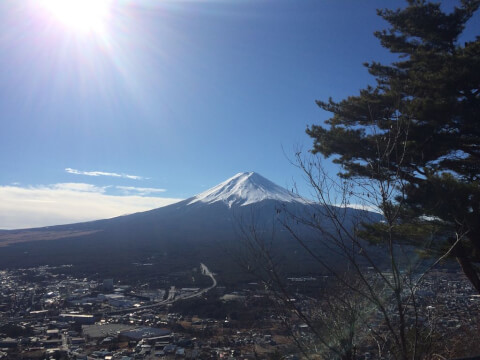
There is a mountain trail to the top of Tenjozan, but it is very steep and takes more than 40 minutes one way.
Therefore, we recommend using the "Kachi Kachiyama Ropeway" (officially called the Fuji Panoramic Ropeway).
A 3-minute one-way ride in the air provides a superb view, and the scenery outside the train window is also fantastic.
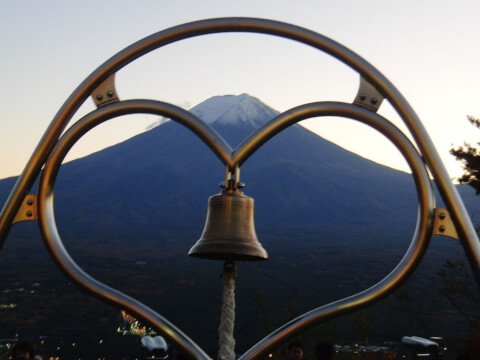
On the passage to the ropeway platform, the story of "Kachi Kachiyama" is introduced, so passengers who do not remember the story can enjoy it without worry.
This is a place suitable for everyone, from children to adults.
Kawaguchi Lake Tenjozan Park Information
Address: 1163-1 Asakawa, Fujikawaguchiko, Minamitsuru-gun, Yamanashi
Access: 10 minutes on foot from Fujisan Kyuko Line Kawaguchiko Station
Phone Number: 0555-72-0363
Closed: No regular holidays
Business Hours: 9:00-17:20 (off-season)
Prices: Round trip - Adults (junior high school students and above) 800 yen, Children round trip 400 yen Other cruise ship package (Adults 1400 yen, Children 700 yen)
Official Website: Fuji Panoramic Ropeway
3. Kawaguchi Lake Music Box Forest

The "Kawaguchiko Music Forest" is a recommended spot for Lake Kawaguchi dates or outings with friends.
As you enter the museum, you'll feel like you've stepped into a fairy-tale world of medieval Europe, with the gentle music of music boxes unfolding before you.
The location overlooking Lake Kawaguchi and Mount Fuji is also excellent, and the European-style street scene with Mount Fuji in the background is very romantic.
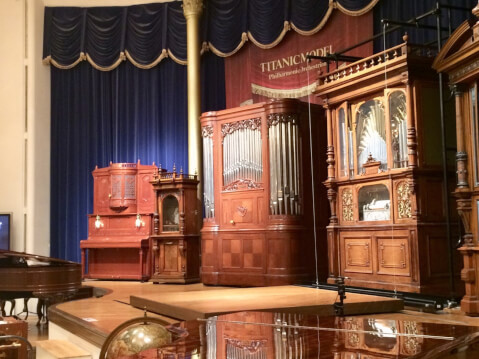
This theme park showcases many meaningful music boxes that also play automatically.
Starting from the Karakuri dolls "Mechanical Era," which Marie Antoinette loved and has a history of 200 to 300 years, there will be a row of antique items, such as the original automatic record player "Disc Music Box."
A special feature is that you can hear the sound of instruments playing on the real Titanic!
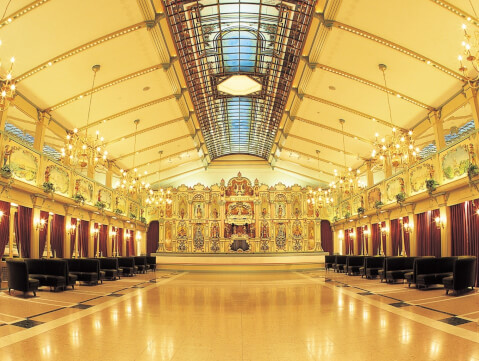
In addition to the world's largest dance organ measuring 20 meters, there are live sand art performances and fountain shows.
There are many restaurants and cafes on the menu, and the soft-serve ice cream "Cremia," which can only be tasted here, is a must-try.
There are many activities here that you won't get tired of even if you stay for a day, such as experiencing handmade music boxes.
If you are visiting as a couple, why not make a wish for eternal love at the Wishing Fountain?
Kawaguchiko Music Forest Information
Address: 3077-20 Kawaguchi, Fujikawaguchiko, Minamitsuru-gun, Yamanashi
Access: 26 minutes by "Kawaguchiko Tour Retro Bus" from Fujisan Kyuko Kawaguchiko Station About 15 minutes from Chuo Expressway Kawaguchiko IC
Phone Number: 0555-20-4111
Closed: Late January to the end of February
Business Hours: 9:30-18:00 (subject to change) Fees: Adults 1,500 yen, University/High School Students 1,100 yen, Elementary/Middle School Students 800 yen Official Website: Kawaguchiko Music Forest
4. Yamanashi Gem Museum
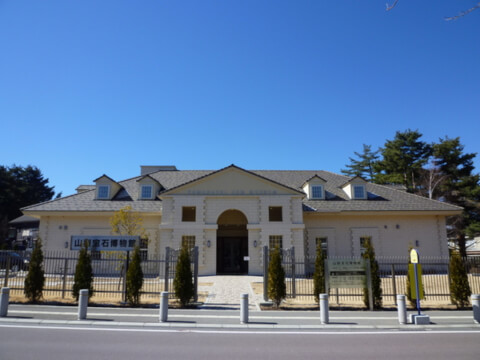
Surprisingly, Yamanashi Prefecture is the leading prefecture in Japan for precious metal and gem processing.
It holds one-third of the domestic jewelry shipment share and is also known as a crystal-producing region.
The "Yamanashi Gem Museum" is the first specialized gem museum established in the gem-rich Yamanashi Prefecture.
Originally located in Kofu City, it relocated to its current site in 2007 and reopened after renovations.
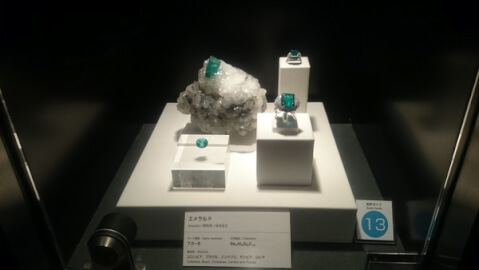
With an exterior featuring Western European architecture, the museum displays over 3,000 pieces of jewelry from more than 500 varieties collected from around the world.
It also includes rare and valuable gemstones that can only be seen here.
Notably, the giant Brazilian crystal, standing 180 centimeters tall and weighing 1,270 kilograms, showcased on a specially designed stage, is a must-see.

Here, you can gain a thorough understanding of how raw stones, which take a considerable amount of time to form, are processed and brought to the market.
The most delightful part is that you can purchase jewelry here at prices below the market rate.
Highly recommended as a romantic date course for couples.
After being captivated by the beauty of the jewelry, gifting them to your loved ones will become the most cherished memory of your journey.
Yamanashi Gem Museum Information
Address: 6713 Funatsu, Fujikawaguchiko, Minamitsuru-gun, Yamanashi
Access: 10 minutes from Chuo Expressway Kawaguchiko IC
10 minutes by bus from Fujisan Kyuko Line Kawaguchiko Station
Phone Number: 0555-73-3246
Closed on: Wednesdays (No closures in July and August)
Business Hours: 9:00-17:30 (Seasonal variations)
Admission Fee: Adults 600 yen, Elementary and Middle School Students 300 yen
Official Website: Yamanashi Gem Museum
5. Oishi Park

For those seeking a leisurely time along Lake Kawaguchi, we recommend Oishi Park.
Located on the northern shore of Lake Kawaguchi, Oishi Park offers an excellent vantage point to overlook Mount Fuji and the lake.
With over 90 varieties of seasonal flowers in bloom, the park is often referred to as a photography spot where you can capture "flowers, Mount Fuji, and Lake Kawaguchi" from exceptional angles.
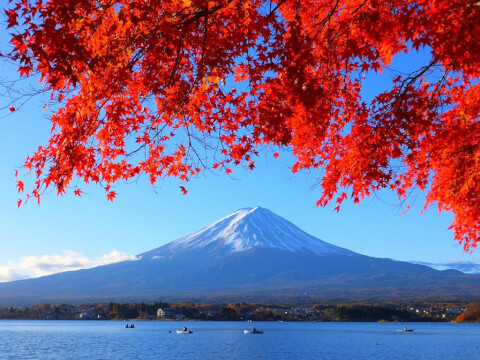
One highlight of the park is a 350-meter-long flower street.
This scenic route is illuminated by various flowers such as moss phlox, rapeseed blossoms, tulips in spring, irises and glowworm flowers in early summer, and cosmos and sedum in autumn.
The park is particularly spectacular in late June to mid-July when the lavender carpet is in full bloom.
Together with Yagisaki Park on the south shore, Oishi Park serves as the main venue for the Kawaguchiko Lavender Festival during this period, attracting numerous visitors every year.
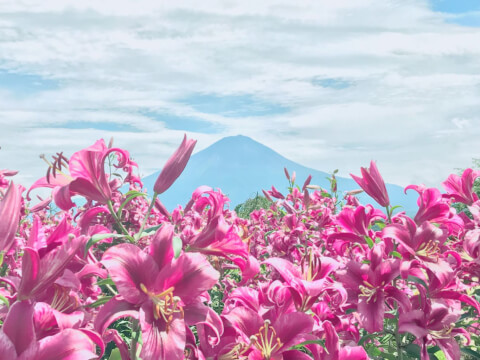
In addition to lavender, the park showcases splendid attractions like the blooming azaleas in July and August and the vibrant autumnal colors of cosmos and sedum in September.
During the flower-scarce winter season, the park hosts "Kawaguchiko Illumination," where Mount Fuji and Lake Kawaguchi can be enjoyed under enchanting lights.

Within the park, the "Kawaguchiko Nature Life Center" and the local market "Oiya" offer fruit-picking experiences (blueberries and cherries) and the chance to make jams.
After exploring the park, you can indulge in fresh vegetables and fruits at these locations.
Oishi Park Information
Address: 2585 Oishi, Fujikawaguchiko, Minamitsuru-gun, Yamanashi
Access: Approximately 14 minutes from Chuo Expressway Kawaguchiko IC About 32 minutes by retro bus from Fujisan Kyuko Kawaguchiko Station, alighting at "Kawaguchiko Nature Life Center"
6. Yurari Onsen with a View of Mount Fuji

When visiting Lake Kawaguchi, it's always a good idea to relax in a hot spring to alleviate travel fatigue.
"Fuji Observatory Yurari" is a day-use hot spring facility adjacent to Michi-no-Eki Narusawa.
Here, you can enjoy various hot springs, including an outdoor bath with a magnificent view of Mount Fuji, a cave bath, carbonated springs, and a divine mountain spring bath.
The natural hot spring water, utilizing nanotechnology, provides excellent moisturizing and warmth effects.
Open until 22:00, so you don't have to worry about arriving late.
The entrance fee includes rental towels and face towels, making it convenient as you only need to show up; no need to bring personal items separately.
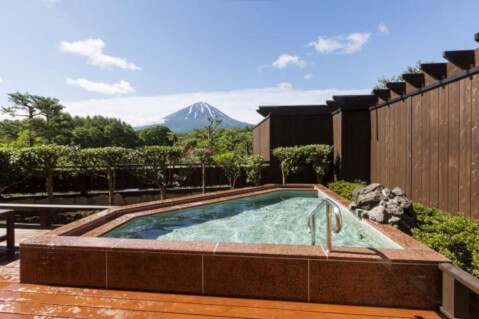
Strictly speaking, "Yurari" is located in the neighboring village of Narusawa, but it is easily accessible from Lake Kawaguchi.
If you're driving, it's about a 10-minute drive from "Kawaguchi IC" on the Chuo Expressway, and there are regular bus routes and free shuttle buses from Kawaguchiko Station.
Not only Lake Kawaguchi but also Lake Saiko is nearby, making it fun to stroll and take a hot bath.
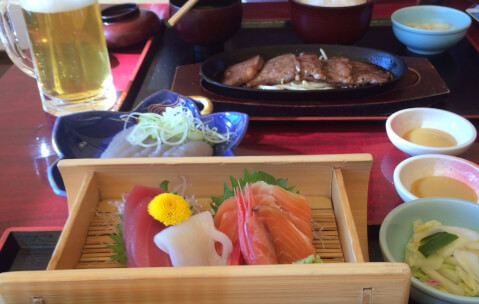
What sets Yurari apart is not only its hot springs but also its restaurant.
If you use a private room, the waiter will bring you the food you ordered.
If you're visiting with family, your children will surely love it.
Next to the roadside station Narusawa, there is a museum with a giant roaring dinosaur model, leaving a lasting impression.
Yurari Onsen Information
Address: 8532-5 Narusawa Village, Minamitsuru-gun, Yamanashi
Access: About 10 minutes from Kawaguchiko IC, Fujiyoshida IC About 20 minutes by bus from Fujisan Kyuko/Kawaguchiko Station, alighting at "Fuji Green Holiday Village" Free shuttle bus from Kawaguchiko Station
Phone Number: 0555-85-3126
Closed: None Business Hours: 10:00-22:00 (reception until 21:00)
Prices: Adults 1,300 yen on weekdays, 1,500 yen on weekends and holidays (10:00-19:00), 1,300 yen after 19:00 Children: All day 650 yen on weekdays, 700 yen on weekends and holidays
Official Website: Fuji Observatory Onsen Yurari
7. Hoto Fudo Higashi Koiji Shop
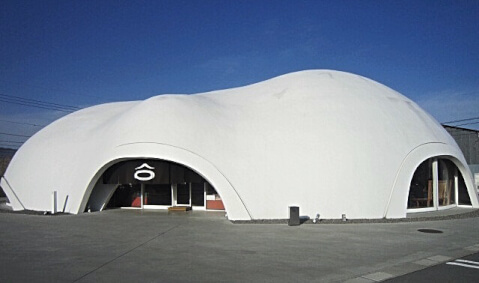
When it comes to representative cuisine in Yamanashi, "hoto" is a must-mention.
In the area adjacent to Lake Kawaguchi, there are Fujisan's udon and Oshino Hakkai's soba, but around Lake Kawaguchi, it's "hoto."
There are many "hoto" restaurants around Lake Kawaguchi.
Among the numerous hoto restaurants, the most eye-catching is Hoto Fudo Higashi Koiji Alley Shop.
The unique appearance with a pure white fluffy domed roof is quite distinctive.

The store is quite spacious, and you can enjoy your meal in a comfortable space.
The menu at this restaurant is not extensive.
The hoto menu is just one item, "fudo hoto," and they also offer Inari sushi, simmered offal, and horse sashimi.
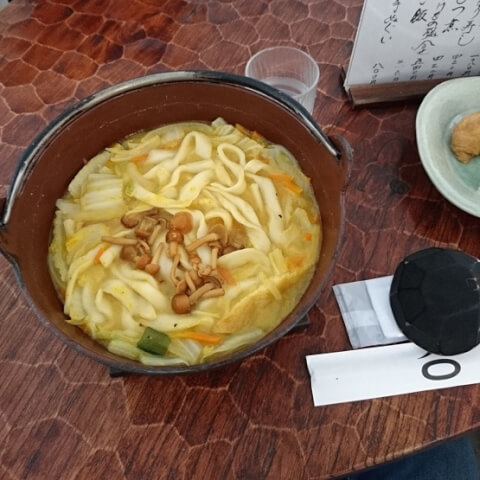
However, the signature "Unmoving Hot Pot" is exquisite, with homemade miso-stewed noodles, piping hot pot, and addictive flavors.
Purely plant-based ingredients like pumpkin and vegetables come from the foot of Mount Fuji, and the portions are just right.
This restaurant is a place where you can taste not only visually interesting but also delicious hot pot.
Hoto Fudo Higashi Koiji's Food Information
Address: 2458 Higashikoiji Funatsu, Fujikawaguchiko, Minamitsuru-gun, Yamanashi
Access: About 8 minutes by car from Fujisan Kyuko Kawaguchiko Line Kawaguchiko Station About 3 minutes by car from Chuo Expressway Kawaguchiko IC Phone Number: 0555-72-8511
Closed: Open all year round
Business Hours: 11:00-20:00
Prices: Fudo hoto 1,080 yen (tax included) Horse sashimi 1,080 yen (tax included), etc.
Read also: 13 Local Delicacies Recommended in Yamanashi! A Grand Gathering of Hot Pots, Sake, and Unknown Local Delights
【Recommended sightseeing places around the West Lake】
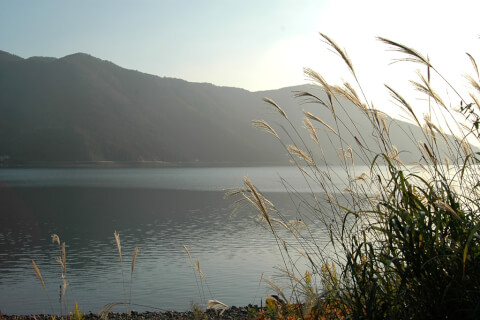
Lake Saiko is a completely different world, despite being the closest lake to Lake Kawaguchi.
The lush Aokigahara Jukai forest spreads around, creating a very tranquil and mysterious atmosphere.
It lacks the hustle and bustle of Lake Kawaguchi, making it the least visited among the Fuji Five Lakes.
Nature at the foot of Mount Fuji still thrives, offering opportunities for hiking, camping, and outdoor activities.
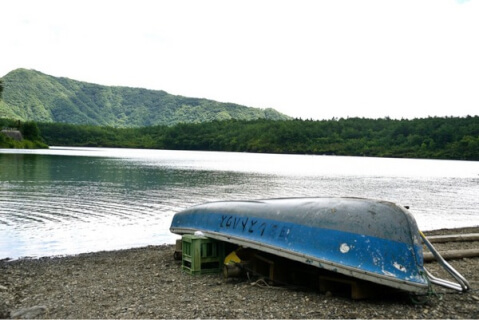
Lake Saiko is the fourth largest lake among the Fuji Five Lakes and the second deepest (71.7m) after Lake Motosu.
What brought sudden fame to this lake is the discovery of the believed-to-be extinct species, Kunimasu.
Kunimasu originally lived in Lake Tazawa in Akita Prefecture and was released into Lake Saiko in 1935.
Due to environmental destruction, it went extinct in its hometown, Lake Tazawa.
However, in 2010, after 70 years, Kunimasu was rediscovered in Lake Saiko, leading to the addition of the name "Lake of Kunimasu."
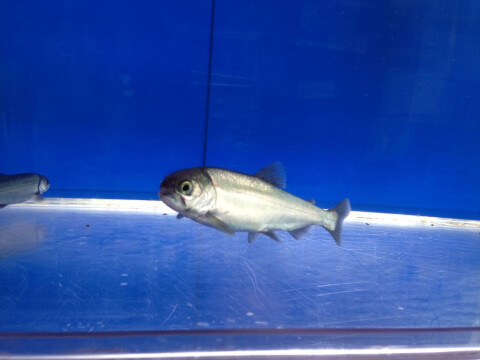
Here are recommended spots to visit in the mysterious Lake Saiko, reachable in about 30 minutes from Lake Kawaguchi.
1. Saiko Healing Village Nemba
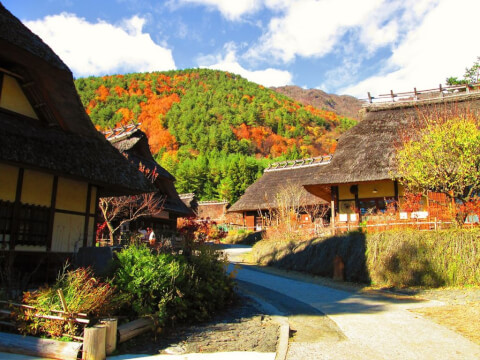
This is an open-air museum that has restored the once-thriving village of Nemba Shuraku, with 20 thatched-roof old farmhouses.
Nemba Village was a prosperous sericulture area, a beautiful village with close views of Mount Fuji.
However, it was destroyed in 1966 due to a typhoon-induced landslide disaster, along with many residents.
More villagers wanted to rebuild the village, and with the birth of Fujikawaguchiko Town in 2003, comprehensive development began.
Currently, the restored 20 traditional thatched-roof houses are registered as National Tangible Cultural Properties under the name "Saiso Ie Yachi no Sato Old Watanabe Family Main House."
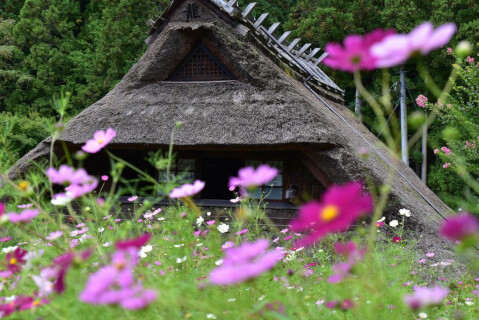
These restored residences serve as an open-air museum where you can experience the atmosphere of the village at that time.
There are also material exhibitions, practical workshops, and product sales related to local traditions, crafts, and culture.
Various activities such as pottery and dyeing are also held here periodically.
The Fuji-shaped ornament with 3776 sarubobo is also a masterpiece.

Iyashi no Sato can be enjoyed in all four seasons.
The view of Mount Fuji from here is wonderful, allowing you to appreciate the different beauties of new greenery, autumn leaves, and snow scenes.
Let yourself truly heal in the primitive Japanese landscape of "Iyashi no Sato."
Saiko Healing Village Nemba Information
Address: 2710 Nishinemba, Fujikawaguchiko, Minamitsuru-gun, Yamanashi
Access: 25 minutes from Chuo Expressway Kawaguchiko IC
50 minutes by retro bus from Fujisan Kyuko Kawaguchiko Station
Phone Number: 0555-20-4677
Closed: Open all year round
Business Hours: March to November: 9:00-17:00 (last entry 16:30)
December to February: 9:30-16:30 (last entry 16:00)
2. Saiko Bat Cave
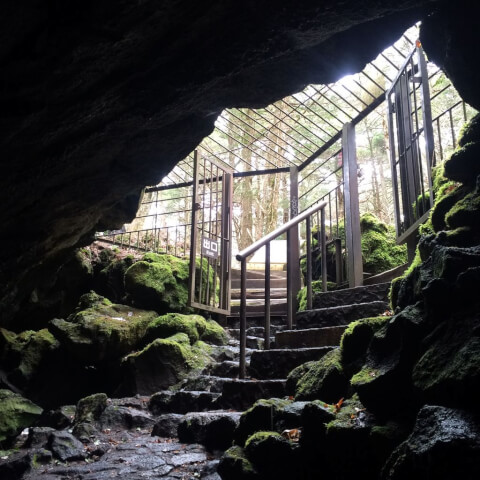
Covering an area of 30 square kilometers, the Aokigahara Jukai forest around Lake Saiko is dark and mysterious even during the daytime.
The impression people have is that once you get lost, you may never find your way out, or your compass may malfunction—so, be especially cautious.
Aokigahara is also a fascinating place where you can enjoy walking on footpaths and sightseeing in interesting spots.
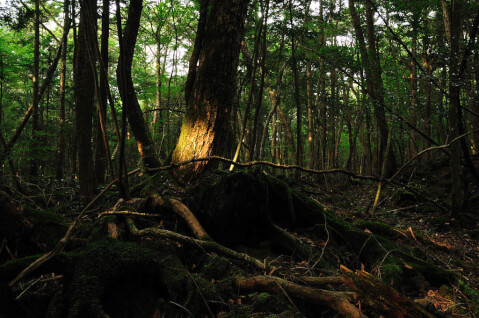
Aokigahara has many unique caves, with the Fugaku Wind Cave and the Narusawa Ice Cave being notable examples.
For those seeking the most adventurous experience, the "Saiko Bat Cave" is recommended.
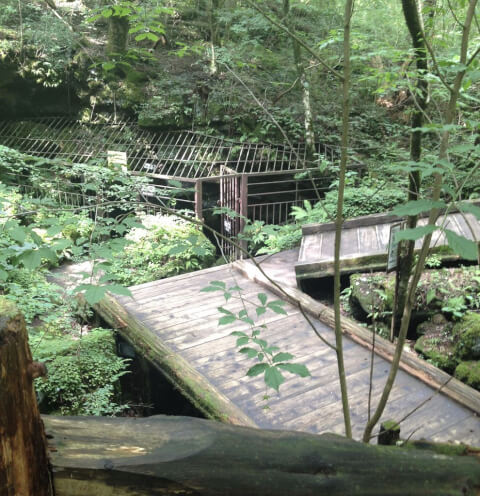
To reach the Saiko Bat Cave, you'll walk along a wooden boardwalk set in the Aokigahara Jukai forest.
Even during the day, the pitch-dark forest is perfect for exploration.
The total length of the cave is 386.5 meters, making it the largest cave under the foot of Mount Fuji.
You'll need to bend down to traverse through the dark cave.
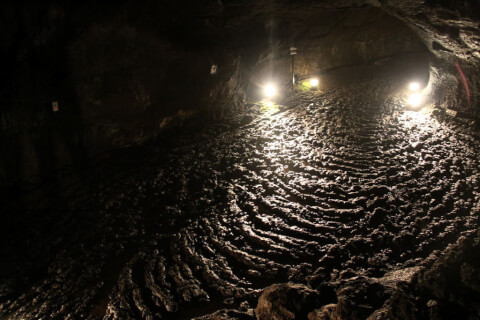
The bat cave is located farther away but rarely sees bat activity during the night.
It seems that five bat species inhabit this cave, but due to changes in the surrounding environment, the bat population has drastically decreased.
However, it seems to be gradually recovering recently.
At the entrance is the Saiko Nature Center, where you can learn about bats and the Aokigahara Jukai forest.
Saiko Bat Cave Information
Address: 2068 Saiko, Fujikawaguchiko, Minamitsuru-gun, Yamanashi
Access: 30 minutes by bus from Fujisan Kyuko Kawaguchiko Station, get off at Komoriana Iriguchi Bus Stop
25 minutes from Chuo Expressway Kawaguchiko IC
Phone Number: 0555-82-3111
Closure Period: December 1 to March 19, the cave is closed to protect the bats.
Business Hours: 9:00-17:00 (last entry 16:30)
Fee: Adults 300 yen, Elementary and middle school students 150 yen
【Recommended sightseeing places around Lake Motosu and Lake Shōji】

It is said that until around the Heian period, Lake Motosu, Lake Shoji, and Lake Saiko were a massive lake called "Se no Umi."
When Mount Fuji erupted in the 6th year of the Jogan era (864), it split into three lakes due to a large flow of lava.
Even now, the water levels of these three lakes are interconnected, and it is believed that groundwater flows back and forth.
When Mount Fuji was designated as a World Heritage site, these three lakes were collectively listed under the heritage name "Mount Fuji Area."

Like Lake Saiko, Lake Motosu and Lake Shoji have fewer visitors.
There are many natural landscapes, such as the original forests of Mount Fuji, making it perfect for hiking. However, there are few tourist attractions and accommodation facilities.
Due to the scarcity of visitors, the environment is very tranquil, allowing you to relax by the lakeside while appreciating the breathtaking scenery.
Below, I will provide an overview of Lake Motosu and Lake Shoji.
1. Lake Motosu

Lake Motosu is the third-largest lake among the Fuji Five Lakes, with a depth of 121.6 meters and an area of 4.7 square kilometers.
As mentioned earlier, the shores of Lake Motosu span Fujikawaguchiko and Minobu Town, but the boundary line on the lake surface is yet to be determined.

Known for its exceptional water transparency, it is praised as a sacred place for sailing and fishing, making it a popular leisure destination.
Boarding the Motosu Pleasure Boat, you can observe carp, rainbow trout, lake trout, and smelt living in Lake Motosu through the windows at the bottom of the boat.
The design on the back of the 1000 yen note is inspired by Lake Motosu.
2. Lake Shoji
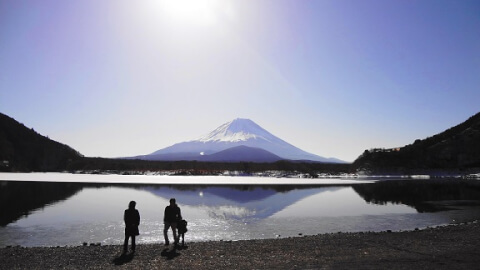
With an area of 0.5 square kilometers, Lake Shoji is the smallest among the Fuji Five Lakes.
In 1895, Englishman Harry Stewart Whitwars (Japanese name: Hoshino Yoshiharu) named Lake Shoji as "the most beautiful place to see Mount Fuji."
Whitwars designated Lake Shoji as his permanent residence and built the "Lake Shoji Inn." As a result of his efforts to spread information about Japan overseas, it became a place visited by numerous foreign tourists.
However, present-day Lake Shoji, as an undeveloped natural attraction compared to Lake Kawaguchi and Lake Yamanaka, has become a lesser-known spot among the Fuji Five Lakes.
Viewed from the northern side of Lake Shoji, Mount Fuji, with Mount Omiya in the foreground, is also called "Childhood Mount Fuji."
Due to the lack of tourist facilities, visitors are few, but many come here for outdoor activities such as fishing, canoeing, and hiking.
3. Location of the 1000 Yen Note (Nakakura Pass Observation Deck, etc.)

The view of Mount Fuji from Lake Motosu and Lake Shoji is a hidden gem.
It has a dedicated fan base, with attractions like the Miniature Mount Fuji at Lake Shoji and the Inverted Mount Fuji.
Among them, the most picturesque and interesting spot is undoubtedly the location for capturing the 1000 yen note's reverse side.
Let's go to the spot where the "Inverted Mount Fuji" is reflected in the cobalt-blue Lake Motosu.
Drive along the coast of Lake Motosu along National Route 300 (Motosu-do) towards Minobu.
Eventually, you will come across a tunnel, which becomes the intersection of Route 709 before the tunnel.
Here, there are public restrooms and parking lots. From the parking lot, you can enjoy the same pattern as the "1000 yen back" by overlooking Lake Motosu.
Continue along National Route 709, and you will see the "Koanso Campsite."
Near the Kouan-so parking lot, a mountain trail is maintained. If you climb steep stairs and slopes for about 30 minutes, you will reach the "Chigurifuji-san Observation Deck (Nakanokura Observation Deck)."
The panoramic view from the observation deck is a masterpiece.
Before you are Mount Fuji and Lake Motosu.
This is a rewarding experience, available only to those who make the effort to climb it.
If the conditions are right and there is no wind, you can enjoy the "Inverted Mount Fuji."
Although the observation deck is on a slope, safety barriers are in place, so it is very safe. Let's savor this extraordinary view and enjoy it to the fullest.
Even for those not confident in climbing the observation deck, you can appreciate the scenery from the mountain trails along the way with the same perspective.
When climbing the mountain paths, it is recommended to wear hiking shoes or comfortable sports shoes.
Location of the 1000 Yen Note and Information
Address: Motosu to Minobu Town, Nakakura Kawashiri, Fujikawaguchiko, Minamitsuru-gun, Yamanashi
Access: From Chuo Expressway Kawaguchiko IC, National Route 139 ⇒ National Route 300 near "Koanso Sho"
From Fujisan Kyuko/Fujisan Station, take the "Subasen Onsenkyo" bus and get off at "Koanso Sho Mae"
Parking: Approximately 10 cars (free)
Notes: Be careful when taking the bus, as the bus frequency is low.
There are indeed too many attractions around Lake Kawaguchi to explore in just one day.
The changing seasons are beautiful, and you can enjoy them throughout the year.
Among the sightseeing spots that couldn't be introduced this time, there are many charming places.
Find your favorite spot and enjoy an elegant vacation.
If you have spare time, consider visiting Lake Shoji, Lake Motosu, and Lake Shoji.
You should be able to encounter different landscapes and ways to enjoy compared to Lake Kawaguchi.

